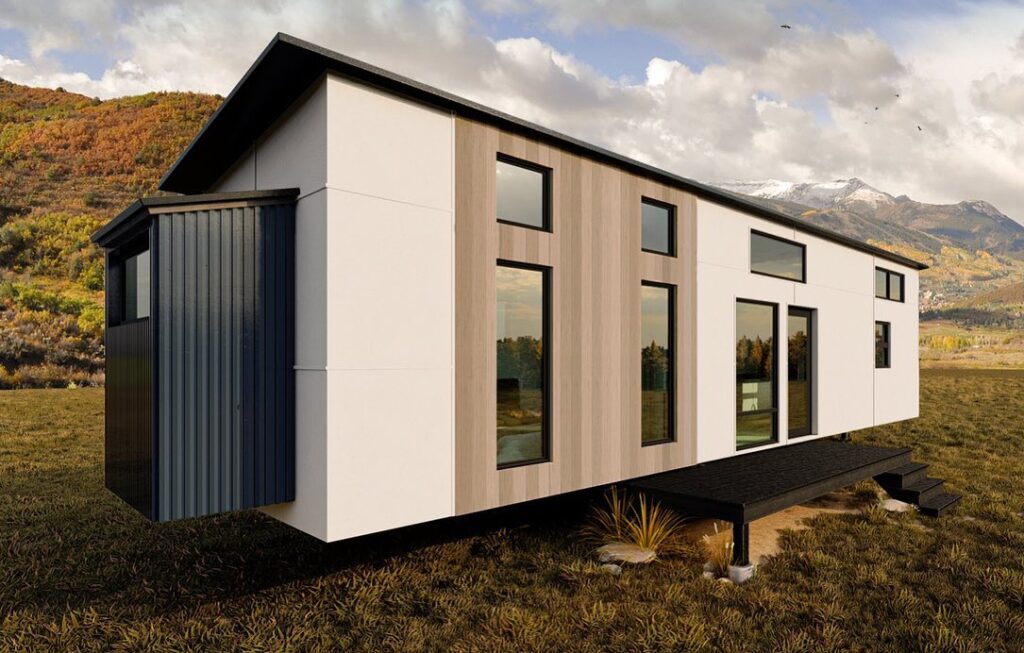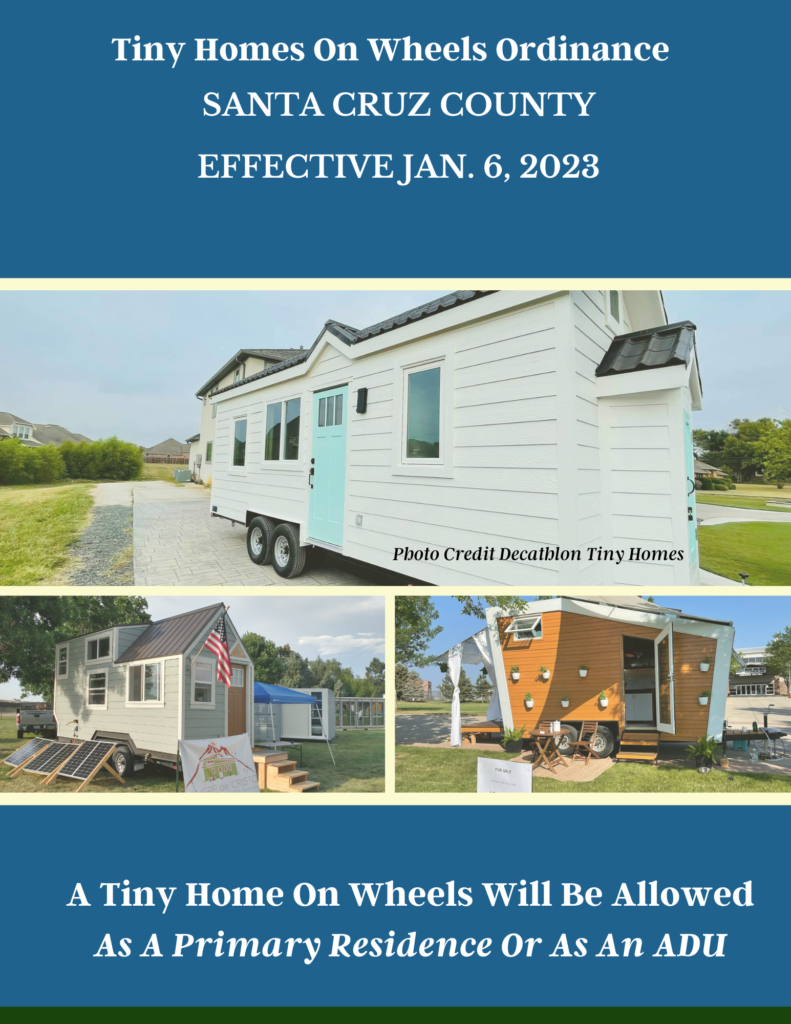Effective Date: Jan 6, 2023
The Santa Cruz County. Ca. Tiny Home On Wheels (THOWs) ordinance, was approved December 6, 2022 and will be in effect for properties outside of the Coastal Zone on January 6, 2023. The ordinance will be in effect for properties within the coastal zone once the Coastal Commission certifies it.
Staff is preparing guidance materials. Currently, the best source of information is the approved ordinance, which is available here:
What is a tiny home on wheels?
A tiny home on wheels (THOW) is a specific type of nonmotorized recreational vehicle called a park trailer as defined in California Health and Safety Code (HSC) 18009.3. It is a house on a trailer that can be towed on public roads with a special permit from the DMV and is registered annually as a park trailer with the DMV. They are no larger than 400 square feet and no taller than 14 feet. Generally, they are designed to look like a tiny house using various design and materials options. They are constructed in compliance with an established national standard for park trailers (ANSI-A119.5 Park Model RV Standard) and inspected and certified by a qualified inspector. They can be purchased from a certified manufacturer or they could be constructed by an owner builder on site under the supervision of a qualified inspection agency. The THOW would come with a certification documenting the THOW meets the accepted standard for park trailers. For this type of structure, the local building inspector would be verifying the unit has the third-party certification and would only be inspecting the on-site installation according to the approved site plan and connection to utilities.
Tiny homes have the potential to provide a small, flexible, and relatively low cost housing option for residents in Santa Cruz County.
Frequently Asked Questions
The following are answers to frequently asked questions. Be sure to read the ordinance for details and other important considerations.
How many are allowed per parcel?
Only one is allowed per parcel. A THOW may function either as the primary unit or as an accessory dwelling unit (ADU) on a parcel (as long as the total number of dwelling units does not exceed the total number of dwelling units allowed on that parcel per provisions of state and local regulations).
What is the maximum allowed size?
The maximum size is as required to allow for towing on public roadways, but not to exceed 400 square feet.
What are the permitting requirements?
THOWs require a permit just like any other new house or accessory dwelling unit in the County. The permit must be renewed with the County every five years. In addition, THOWs must be registered annually with the DMV and all required annual registration fees shall be paid, including the Vehicle License Fee. Failure to register and pay all DMV fees annually shall cause the THOW permit to expire.
What utilities are required for a THOW?
The THOW shall be connected to the approved water source and sewage disposal facility (sewer or septic) in compliance with the latest edition of the California Plumbing Code and local ordinance. Composting toilets are allowed but only in conjunction with an approved onsite sewage disposal facility or connection to a public sewer.
The THOW shall be connected to a source of electricity in compliance with the latest edition of the California Electrical Code and local ordinance. If not connected to the local electric utility power source, an off-grid system may be used that is designed to provide sufficient power based on the expected loads. All off-grid systems shall include solar panels and battery storage. Within the Urban and Rural Service Lines a THOW shall not rely on a generator as a primary or stand-by source of electric power. Outside the Urban and Rural Service Lines a THOW shall not rely on a generator as a primary source of electric power and may include provisions for connection to a generator and meet all requirements of the California Electrical Code and local ordinance. Outside the Urban and Rural Service Lines, the generator shall be a stationary emergency stand-by generator as defined in, and in compliance with all provisions of, SCCC 13.15 Noise Planning.
Can I park a THOW on my driveway?
No, THOWs may not be located on a driveway. The THOW parking pad shall be accessible by a path of travel such that the THOW is towable onto and off the property.
Are there any design requirements for a THOW?
Yes, a THOW must incorporate design features and materials typically used for houses, such as siding or roofing materials, pitched roofs, eaves, residential windows, and window trim. Wheels must have skirting. Other design requirements apply, including Wildland Urban Interface requirements; please read the ordinance.
Are residential fire sprinklers required in a THOW?
If the THOW functions as the primary unit on the parcel, a residential fire sprinkler system is required just like any other new house in the County. If the THOW functions as an ADU, fire sprinklers are generally required only if they are present or being installed in the primary home on the parcel. However, you will still need approval from the appropriate fire district and will need to comply with the fire code. A fire district may require extra on-site water storage for an ADU that is not sprinklered. In this circumstance, installing sprinklers in the ADU may be the most cost-effective option for meeting fire code requirements.
Tiny House Alliance USA Editor
Janet Thome Founder And President
Jan. 6, 2023
The Future Of Tiny Is Now!
janet@tinyhouseallianceusa.org

Photo Courtesy: Commercial Member Wind River Tiny Homes

